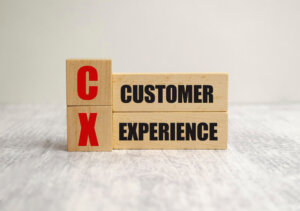Outstanding Customer Service – A Call Out to Leadership
Think about it. How hard can it be to provide outstanding customer service to your customers? It isn’t hard at all…When you make it a priority.
The foundation of good service begins with the Leadership of the company. Company leadership is responsible for ensuring the company culture is customer focused. If “good-enough” products or service is the philosophy of Leadership, the entire company will adopt a ‘good enough’ attitude that customers will see and deliver exceptional customer service.
Regardless of the type of customer service, outstanding customer service requires strong leadership to create a culture of customer-centricity, empower employees to make decisions, and continuously improve the customer experience.
Customer service experience refers to the overall interaction a customer has with a company when seeking assistance or information about a product or service. Some good customer service tips include listening actively, responding promptly and empathetically, offering personalized solutions, and following up to ensure satisfaction. Delivering great customer service involves providing fast, reliable, and friendly service that exceeds customer expectations. It can lead to increased customer loyalty and repeat business.
4 Types of Outstanding Customer Service
- Reactive customer service: This type of service is provided in response to a customer inquiry or complaint. The goal is to resolve the issue as quickly and satisfactorily as possible.
- Proactive customer service: This type of service involves anticipating and addressing customer needs before they become problems. It often involves personalized recommendations, product demonstrations, or regular check-ins.
- Self-service customer service: This type of service allows customers to find solutions to their problems independently through online resources such as FAQs, knowledge bases, or forums.
- Omnichannel customer service: This type of service provides consistent support across multiple channels, including phone, email, chat, social media, and in-person interactions.
Customer loyalty refers to the tendency of satisfied customers to continue doing business with a company over time. This can be achieved through excellent customer service, product quality, and value. Poor customer service can result in dissatisfied customers, negative reviews, and lost business. It is essential to address customer complaints promptly and offer meaningful solutions.
Customer service teams are groups of employees who specialize in providing customer support agent and assistance. They often work in call centers or online chat platforms. Satisfied customers are customers who are happy with the products or services they have received and feel that their needs have been met. Customer service examples include resolving a technical issue, answering a billing question, or providing product recommendations.
Loyal customers are customers who regularly use a company’s products or services and are less likely to switch to a competitor. They may also refer new customers to the company. Customer journey refers to the series of interactions a customer has with a company, from initial awareness to post-purchase support. It is important to understand the customer journey to identify areas for improvement and provide a seamless customer experience.
Quality of excellent customer service and quality of products makes for proud employees. Proud employees are enthusiastic. Proud and Enthusiastic employees lead to truly exceptional customer service. Give your employees a reason to be proud. Give your employees a reason to provide great customer service personalized and attentive service.
It really isn’t that hard, but it is up to you, the Leadership.
In Conclusion
Outstanding customer service is crucial for businesses to attract and retain customers. It is not just a task for customer service teams but requires strong leadership from the top to create a culture of customer-centricity, empower employees to make decisions, and continuously improve the customer feedback experience. Different types of customer service, including reactive, proactive, self-service, and omnichannel, can help businesses meet customers’ needs and expectations.
 Sections of this topic
Sections of this topic















